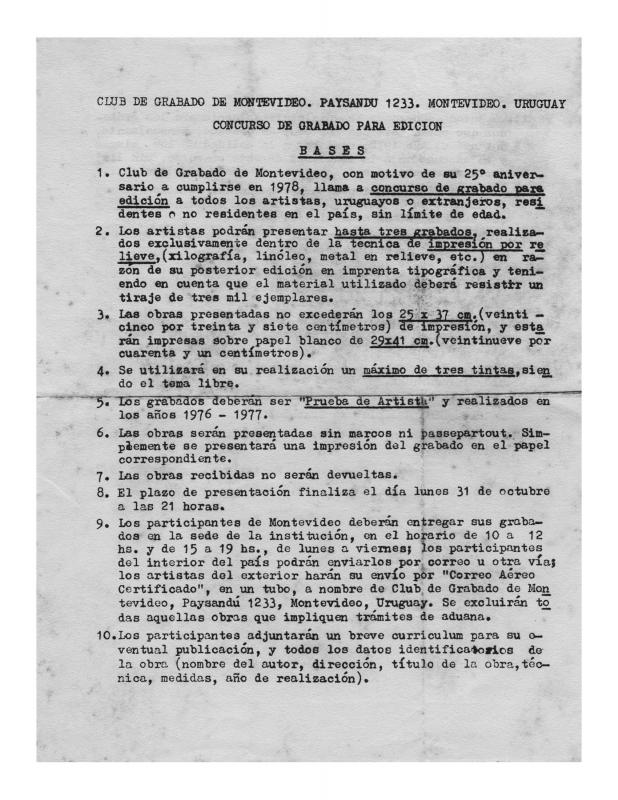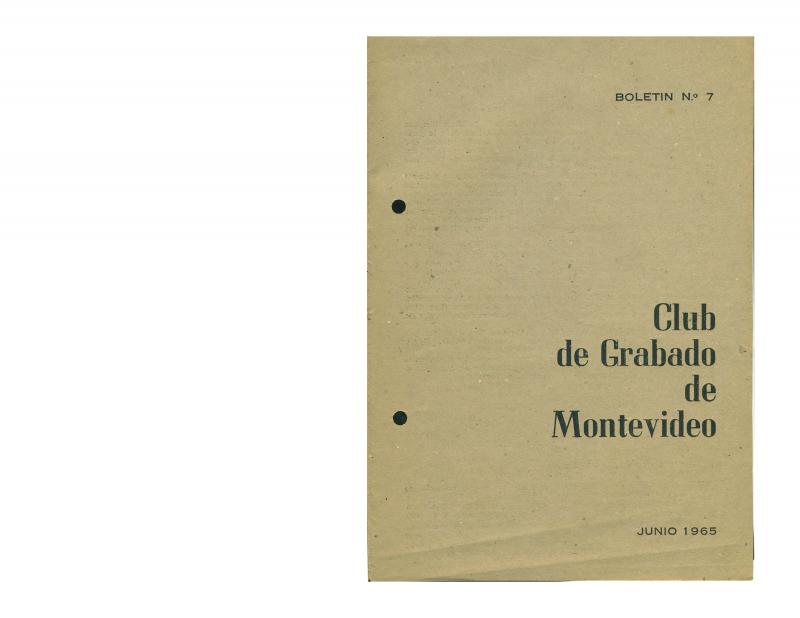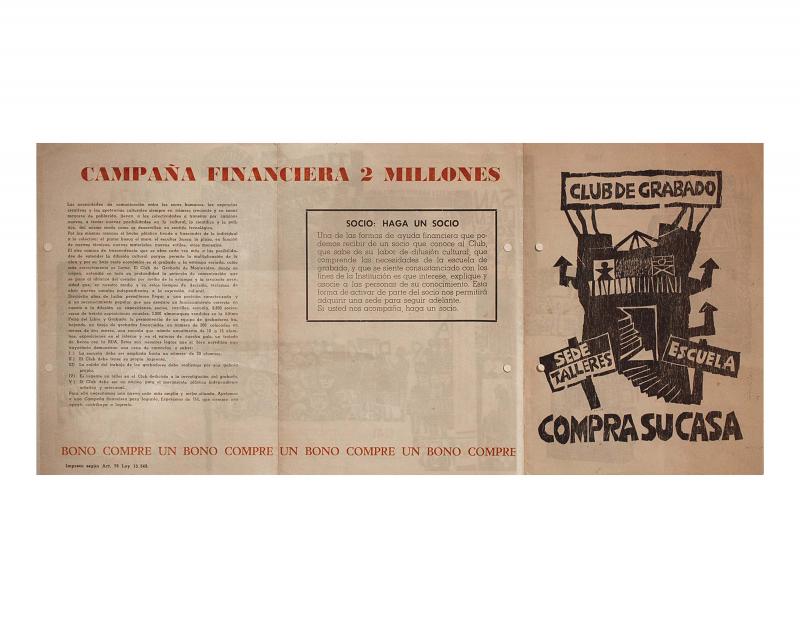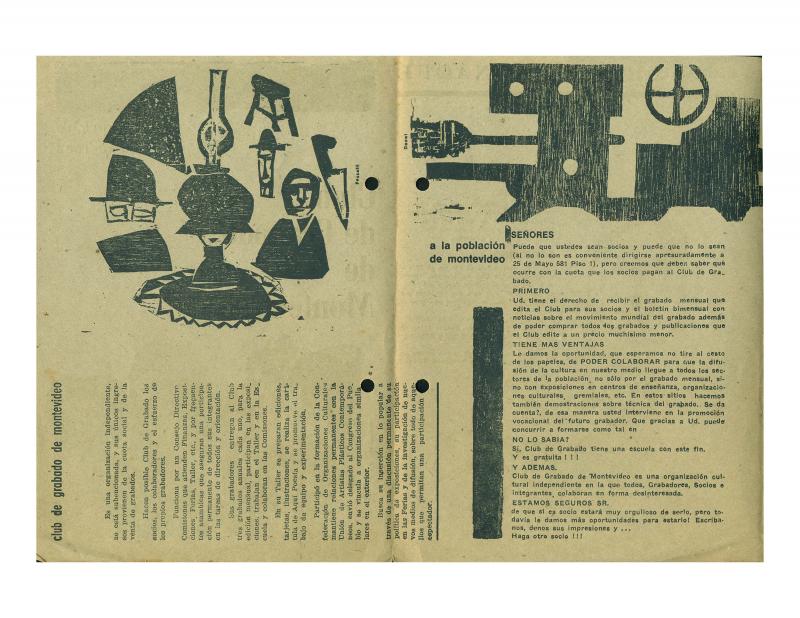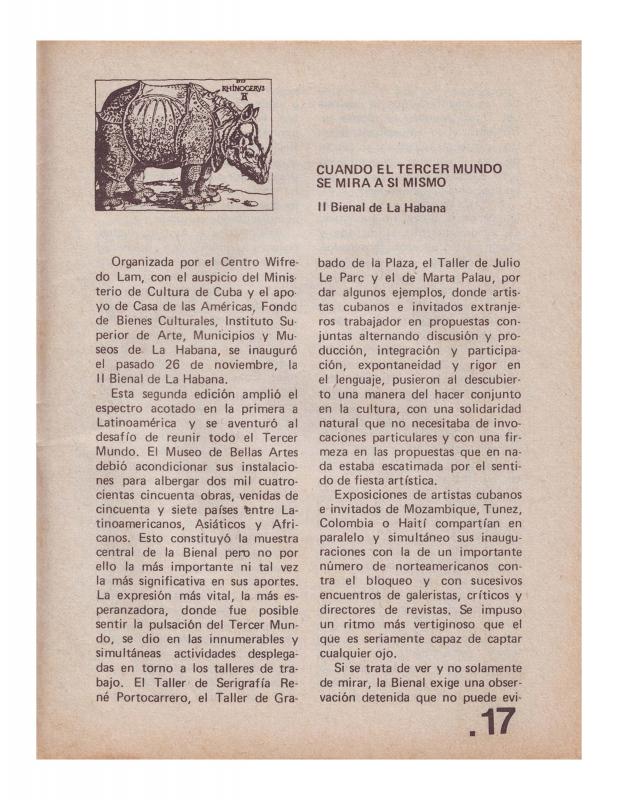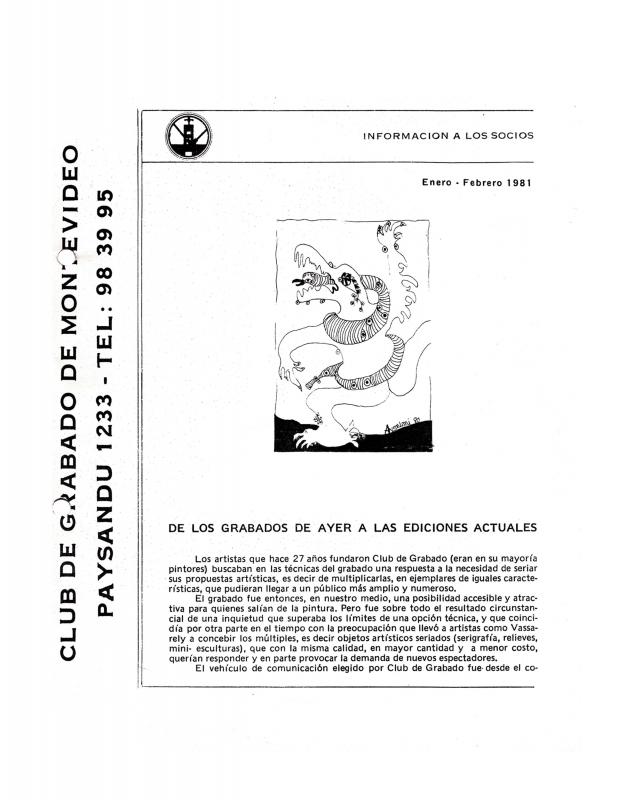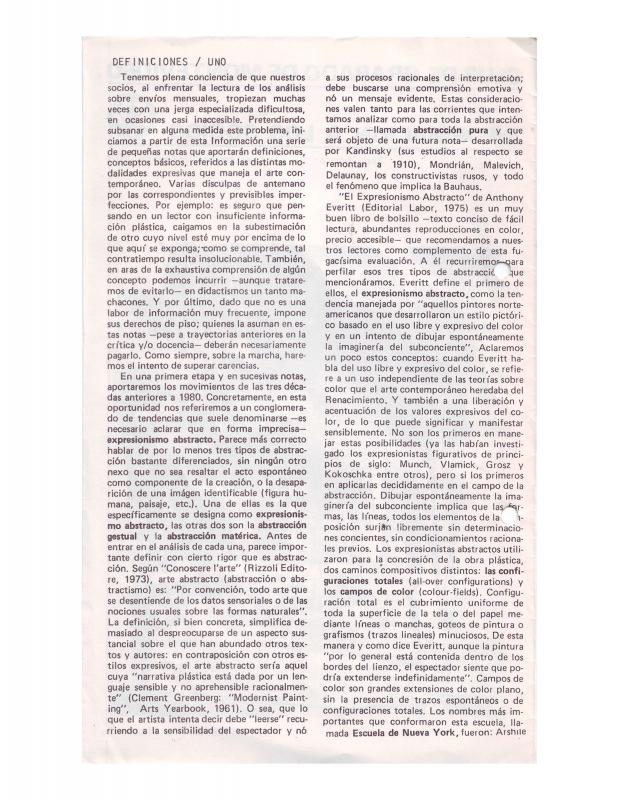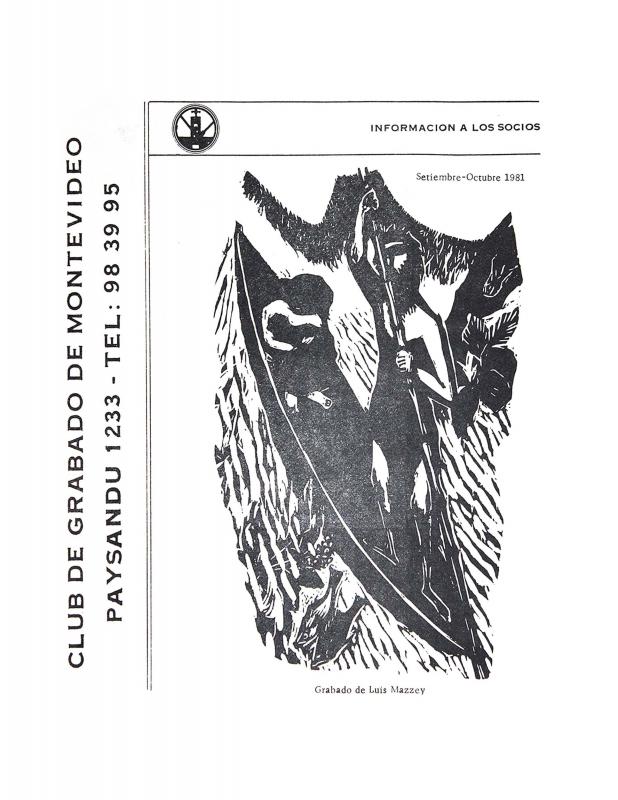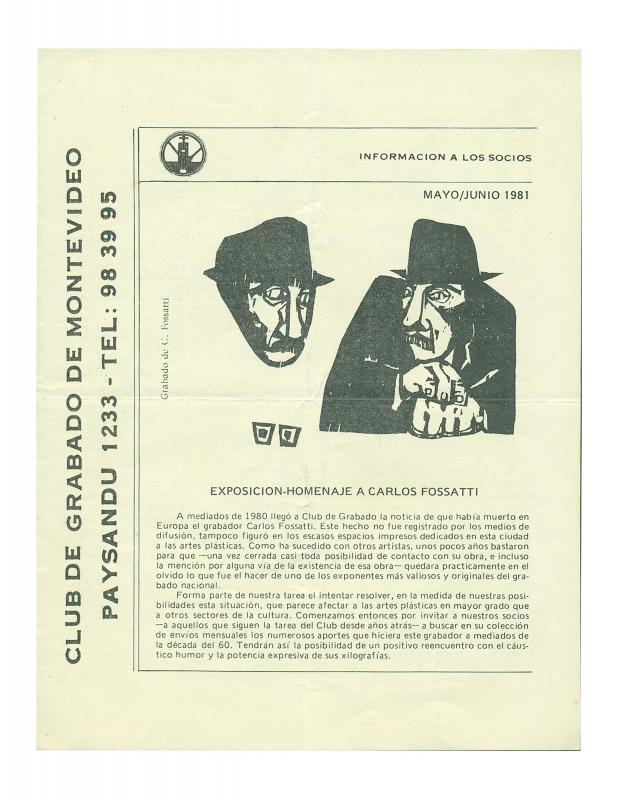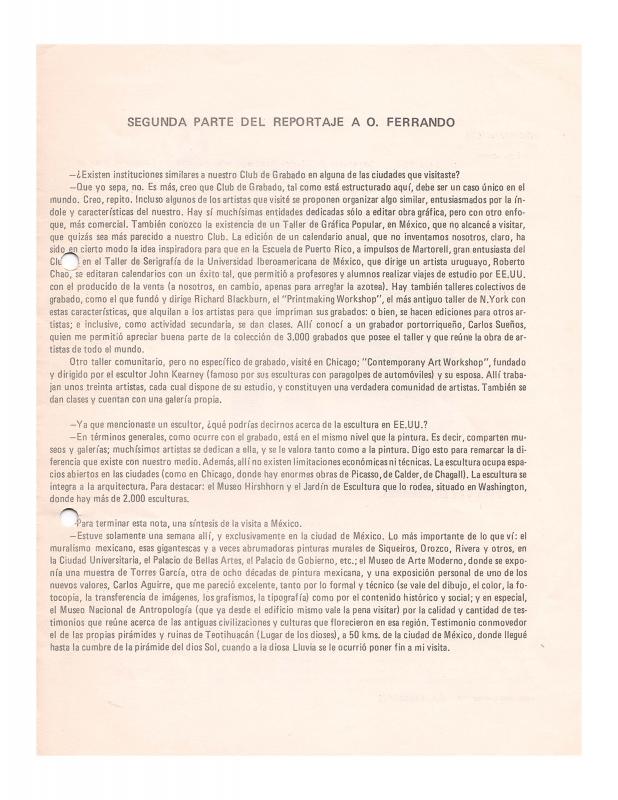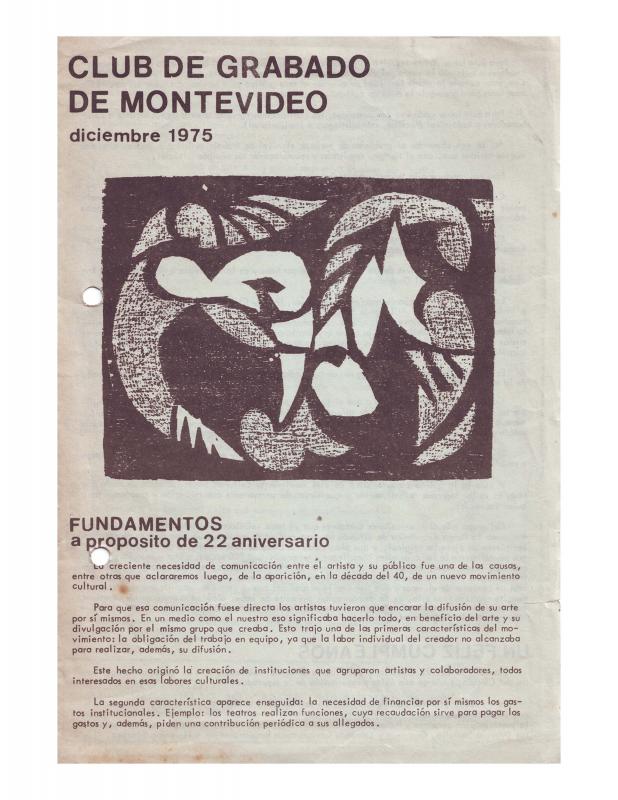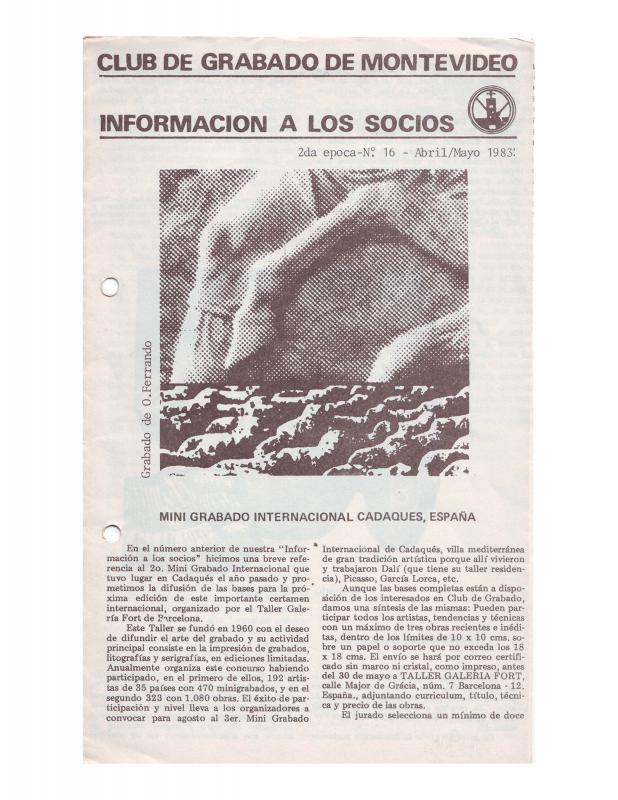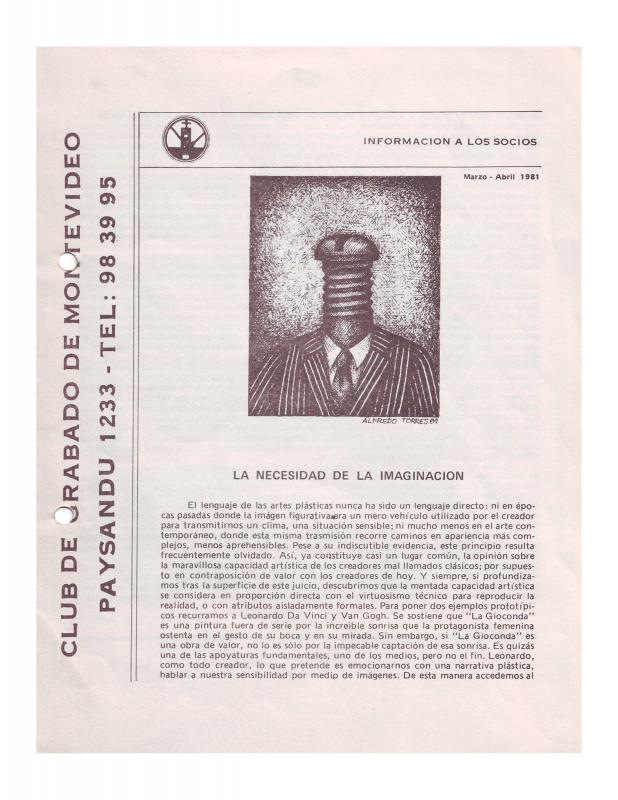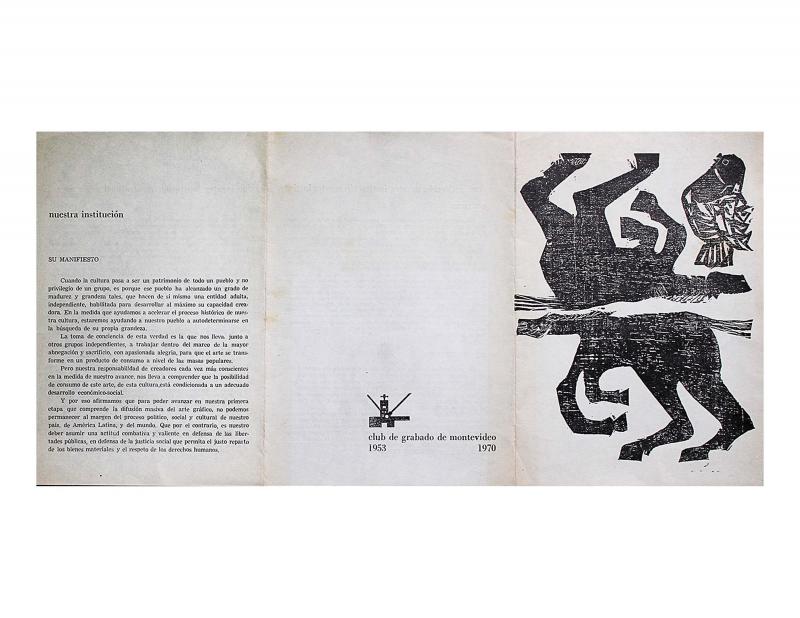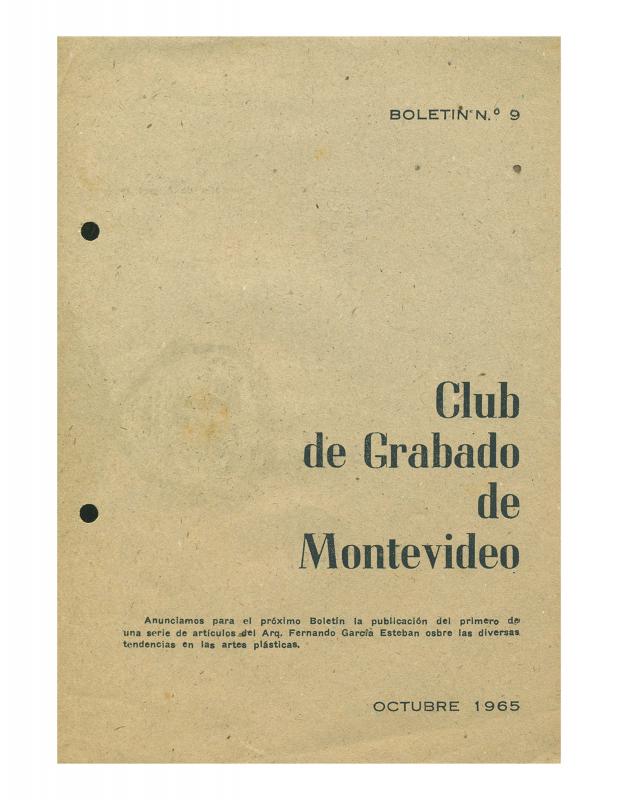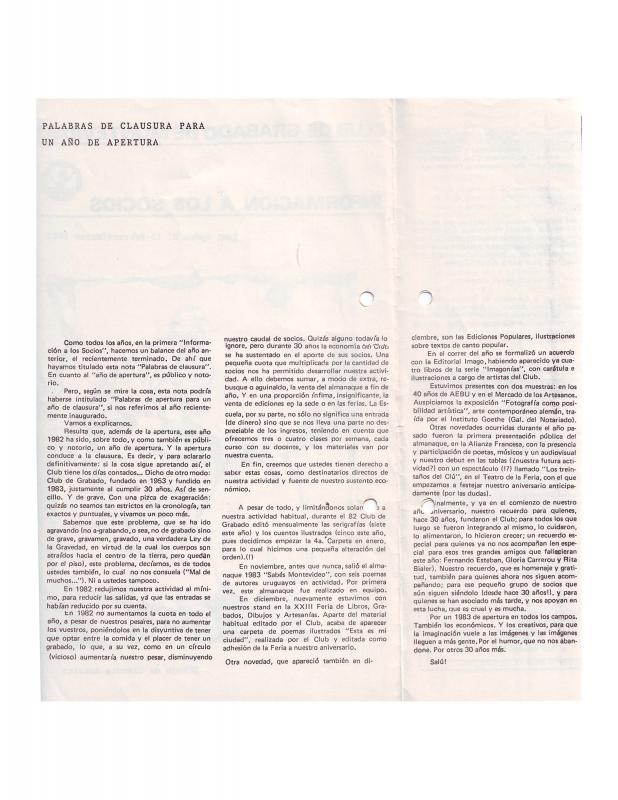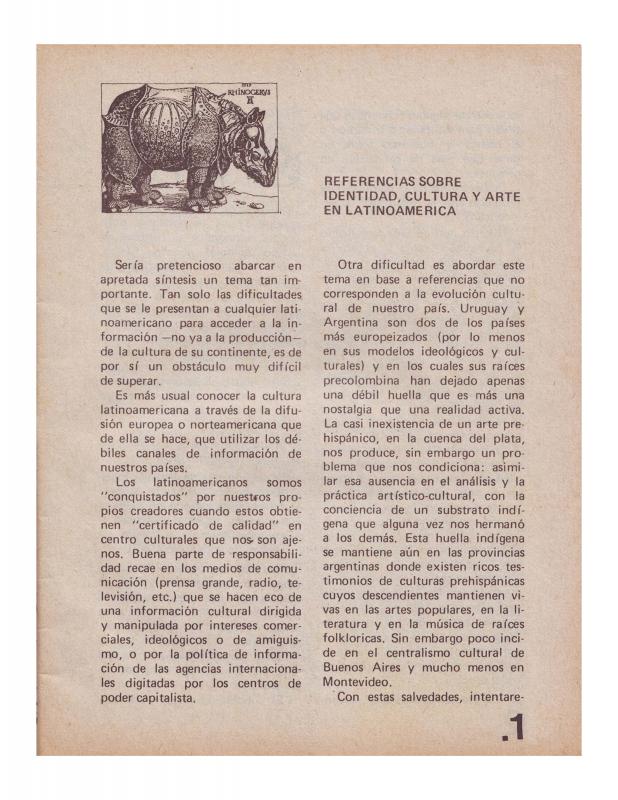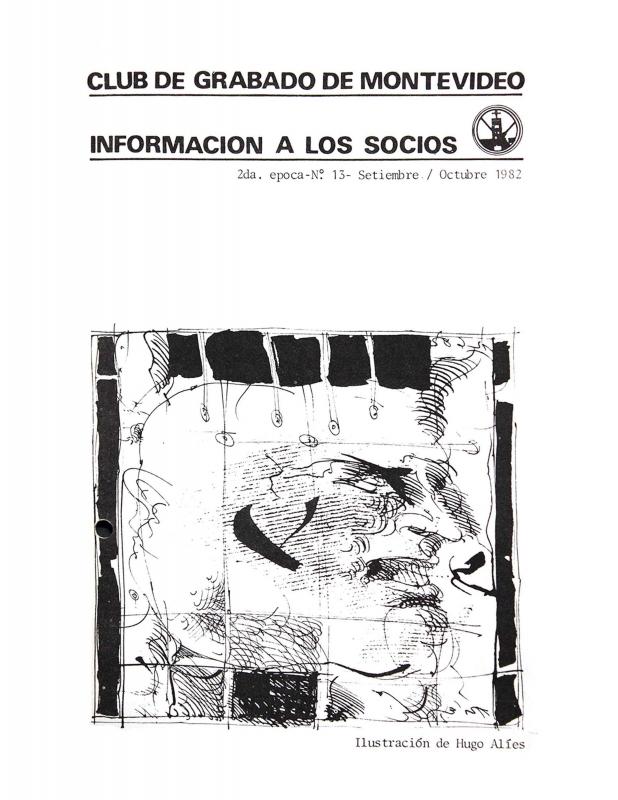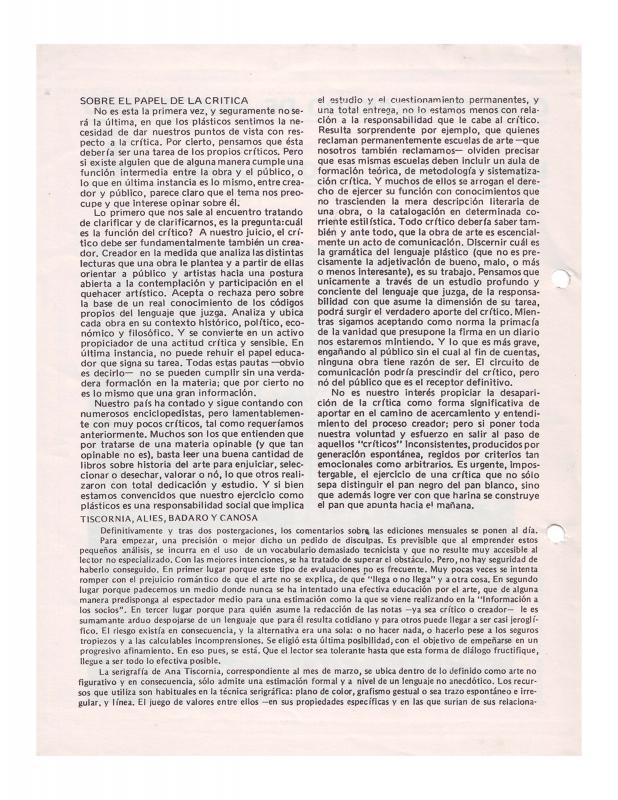GRAFO, the quarterly publication launched by the CGM (Club de Grabado de Montevideo) in 1985, provided critical reviews of contemporary art. This initiative grew out of the newsletters the CGM used to send its members some years earlier. One of the most interesting articles in this first issue is by the artist Clemente Padín (b. 1939), who was a political activist in Uruguay before, during, and after the military dictatorship that took power in 1973. Padín was a performer, poet and, especially, a promoter of so-called “mail art” in Uruguay and farther afield, mainly in São Paulo. Mail art became a form of protest in Latin America, which used the postal services in each country—a procedure that was in itself a subversive act—to circulate works of art beyond the usual perimeters. Padín reports that the first exhibition of mail art in Latin America (Festival de la Postal Creativa) was held at the Galería U in Montevideo in 1974. He traces the rapid spread of mail art, naming the following events: the Bienal de São Paulo (1981); the founding of the group Solidarte in Mexico City; the founding of the AUAC (Asociación Uruguaya de Artistas Correo) which was associated with the labor movement and various social organizations, which led to exhibitions in such different cultural and geographic locations as Montevideo and Moscow. Padín describes those efforts as agents of sociopolitical change that helped to expand a circuit of artists around the world.
[As complementary reading see, in the ICAA digital archive, the following articles published by the Club de Grabado de Montevideo: “Concurso de grabado para edición” (doc. no. 863481); “13 años de actividad de Club de Grabado de Montevideo” (doc. no. 1183571); “Boletín N° 7 Club de Grabado de Montevideo” (doc. no. 1182833); “Club de Grabado compra su casa” (doc. no. 1192649); “Club de Grabado de Montevideo 22 Aniversario 1953 - Agosto 1975” (doc. no. 1183514); “Club de Grabado de Montevideo a la población de Montevideo” (doc. no. 1183124); “Cuando el Tercer Mundo se mira a sí mismo. II Bienal de La Habana” (doc. no. 1184459); “De los grabados de ayer a las ediciones actuales” (doc. no. 1191787); “Definiciones / Uno” (doc. no. 1189065); “Entrevista a Luis Mazzey” (doc. no. 1186991); “Entrevista a Óscar Ferrando” (doc. no. 1186747); “Entrevista a Óscar Ferrando [segunda parte]” (doc. no. 1186802); “Fundamentos a propósito de su 22 aniversario” (doc. no. 1182640); “Mini Grabado Internacional de Cadaqués. España” (doc. no. 1191135); “La necesidad de la imaginación” (doc. no. 1190793); “Nuestra institución” (doc. no. 1182010); “Los nuevos movimientos de las artes” (doc. no. 1182868); “Opiniones (I)” (doc. no. 1185411); “Palabras de clausura para un año de apertura” (doc. no. 1191167); “Referencias sobre identidad, cultura y arte en Latinoamérica” (doc. no. 1183641); “Reflexiones en torno a la supuesta crisis de las artes plásticas” (doc. no. 1185539); and “Sobre el papel de la crítica” (doc. no. 1187071)].

